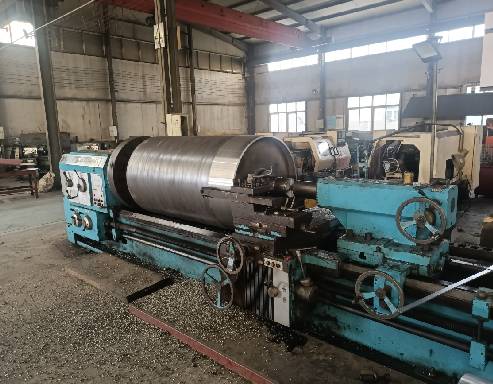 Afrikaans
Afrikaans  Albanian
Albanian  Amharic
Amharic  Arabic
Arabic  Armenian
Armenian  Azerbaijani
Azerbaijani  Basque
Basque  Belarusian
Belarusian  Bengali
Bengali  Bosnian
Bosnian  Bulgarian
Bulgarian  Catalan
Catalan  Cebuano
Cebuano  Corsican
Corsican  Croatian
Croatian  Czech
Czech  Danish
Danish  Dutch
Dutch  English
English  Esperanto
Esperanto  Estonian
Estonian  Finnish
Finnish  French
French  Frisian
Frisian  Galician
Galician  Georgian
Georgian  German
German  Greek
Greek  Gujarati
Gujarati  Haitian Creole
Haitian Creole  hausa
hausa  hawaiian
hawaiian  Hebrew
Hebrew  Hindi
Hindi  Miao
Miao  Hungarian
Hungarian  Icelandic
Icelandic  igbo
igbo  Indonesian
Indonesian  irish
irish  Italian
Italian  Japanese
Japanese  Javanese
Javanese  Kannada
Kannada  kazakh
kazakh  Khmer
Khmer  Rwandese
Rwandese  Korean
Korean  Kurdish
Kurdish  Kyrgyz
Kyrgyz  Lao
Lao  Latin
Latin  Latvian
Latvian  Lithuanian
Lithuanian  Luxembourgish
Luxembourgish  Macedonian
Macedonian  Malgashi
Malgashi  Malay
Malay  Malayalam
Malayalam  Maltese
Maltese  Maori
Maori  Marathi
Marathi  Mongolian
Mongolian  Myanmar
Myanmar  Nepali
Nepali  Norwegian
Norwegian  Norwegian
Norwegian  Occitan
Occitan  Pashto
Pashto  Persian
Persian  Polish
Polish  Portuguese
Portuguese  Punjabi
Punjabi  Romanian
Romanian  Russian
Russian  Samoan
Samoan  Scottish Gaelic
Scottish Gaelic  Serbian
Serbian  Sesotho
Sesotho  Shona
Shona  Sindhi
Sindhi  Sinhala
Sinhala  Slovak
Slovak  Slovenian
Slovenian  Somali
Somali  Spanish
Spanish  Sundanese
Sundanese  Swahili
Swahili  Swedish
Swedish  Tagalog
Tagalog  Tajik
Tajik  Tamil
Tamil  Tatar
Tatar  Telugu
Telugu  Thai
Thai  Turkish
Turkish  Turkmen
Turkmen  Ukrainian
Ukrainian  Urdu
Urdu  Uighur
Uighur  Uzbek
Uzbek  Vietnamese
Vietnamese  Welsh
Welsh  Bantu
Bantu  Yiddish
Yiddish  Yoruba
Yoruba  Zulu
Zulu conveyor belt pulley types
Understanding Different Types of Conveyor Belt Pulleys
Conveyor belt systems are crucial in various industries, allowing for the efficient movement of materials from one location to another. At the heart of these systems lies the conveyor pulley, an essential component that drives, redirects, and supports the conveyor belt. This article delves into the different types of conveyor belt pulleys, their applications, and their importance in ensuring smooth operational flow.
1. Drive Pulleys
Drive pulleys, often referred to as head pulleys, are critical for belt movement. These pulleys are located at the end of the conveyor system where the drive motor is situated. As the belt wraps around the drive pulley, it is propelled forward, enabling the transport of materials. The drive pulley can be crowned or flat, with crowned pulleys offering better alignment and reducing belt tracking issues. Correct sizing and material selection for drive pulleys can significantly affect the overall efficiency and longevity of the conveyor system.
2. Idler Pulleys
Idler pulleys play a supportive role in the conveyor system. They do not drive the belt but instead help to maintain its tension and alignment, which is crucial for proper functioning. Idler pulleys come in various types, including troughing idlers (which guide the belt in a trough shape), return idlers (which support the belt on its return journey), and impact idlers (which cushion the load and reduce wear on the belt). Properly installed idler pulleys can enhance the durability of the conveyor system and minimize maintenance needs.
3
. Tail Pulleysconveyor belt pulley types

Tail pulleys are located at the opposite end of the drive pulleys and serve to redirect the return side of the conveyor belt. They play a vital role in ensuring that the belt travels smoothly back to the drive pulley without issues. Tail pulleys must be robustly constructed to withstand the constant tension and stress as they help manage the return belt's movement. Depending on the application, tail pulleys may also be equipped with a rubber lagging to increase friction and prevent slippage.
4. Snub Pulleys
Snub pulleys are used for increasing the wrap angle of the belt around the drive pulley, consequently creating more friction and enhancing the drive's effectiveness. By increasing the contact area between the belt and the drive pulley, snub pulleys help in boosting the conveyor's overall efficiency. These pulleys are essential in situations where the conveyor system is subject to significant loads and requires additional belt control.
5. Guide Pulleys
Guide pulleys help in maintaining proper belt alignment, particularly in long conveyor systems where misalignment can cause significant issues. By ensuring that the conveyor belt remains parallel to its intended path, guide pulleys reduce the risk of premature wear and tear, improving the system’s overall longevity. They are essential in applications where the belt may need to navigate through curves or tight spaces.
Conclusion
Choosing the right type of conveyor belt pulley is integral to the performance of a conveyor system. Each type of pulley has a specific purpose—whether it is to drive, support, align, or redirect the belt. Understanding these different types can help in making informed decisions that contribute to a more efficient, safer, and longer-lasting conveyor system. Given the variety of applications across industries, from manufacturing to logistics, it’s crucial to consider the operational requirements and select pulleys that meet these specific needs. Investing in the right conveyor belt pulleys not only optimizes operations but also ensures that materials are moved safely and efficiently within any facility.
-
Trusted Conveyor Solutions from Leading Conveyor Idler Roller ManufacturersNewsJun.27,2025
-
Reliable Return Idler Solutions for Efficient Belt Conveyor SystemsNewsJun.27,2025
-
Precision Conveyor Accessories for Streamlined Material HandlingNewsJun.27,2025
-
High-Quality Belt Conveyor Idler Solutions for Efficient Material HandlingNewsJun.27,2025
-
High-Performance Belt Conveyor Pulleys for Reliable Material HandlingNewsJun.27,2025
-
Enhancing Material Handling EfficiencyNewsJun.27,2025





























